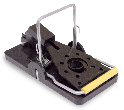Many people confuse ladybugs with the Japanese lady beetle, since they are so similar in appearance. Both insects come from the same family of beetles known as Coccinellidae, with over five thousand known species. In North American, the Japanese lady beetle is called the Asian lady beetle, but in other parts of the world it is known as the Harlequin, Multivariate, Japanese, Pumpkin, or Southern ladybird, the Multicolored Asian lady beetle, and the Halloween lady beetle. While its distant cousin, the ladybug, is known as the ladybird, ladybug, lady beetle, ladyclock, lady cow, and lady fly.
Let's make this a little easier by listing the differences between a ladybug and a Japanese lady beetle:
Color
Size
Japanese lady beetles are not native to the United States. The USDA introduced and released them into the country in the late 70's and early 80's as a biological control measure, but the measure failed. Yet, in 1988, the Japanese lady beetle arrived in the US on an Asian freighter and decided to stay. The insect has grown in population since then, making a positive impact by helping to control the destructive aphid population in tree farms.

The End of the Road for Mice! Quickly eliminate pesky mice and small rodents with this handy six-pack of traps. Easy to bait, set, use, and release. Unique design catches rodents from the front, sides, and back. Simple, safe, sanitary, and reusable for years. Check out Snap-E Mouse Traps today!
Whether you call them lady bugs or lady beetles, you can tell them apart from other insects by their colored, spotted ...
Discover MoreThe best way to rid your home of silverfish is to create a non-friendly environment for them to live in. Keep your home ...
Discover MoreIf you are really hesitant about using chemicals to help take care of any pests you may have, then try a few other ...
Discover More2024-10-29 10:33:11
Ellie
What do Japanese beetle’s (ladybugs) look like?
Copyright © 2025 Sharon Parq Associates, Inc.
Comments